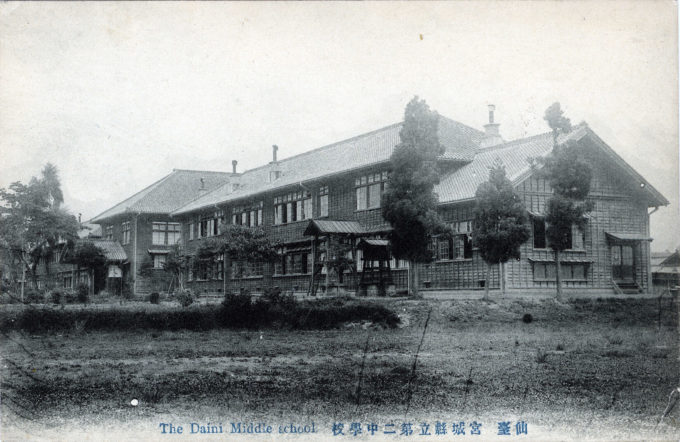See also:
The 1st Higher School, Tokyo, c. 1910
“The most important institutions that emerged from the Middle School Ordinance of 1886 were, without doubt, the five regional middle higher schools, the koto chugakko … With the single purpose of these schools as university preparation, the framework for an organized recruiting network for the most qualified students from throughout the country to enter the only university, the elite Imperial University, was set in place. The higher middle school, consequently, represented a new experiment in the modern Japanese public school system.
“… The Second Higher Middle School (Daini Koto Chugakko), located in Sendai in 1887 – the First Higher Middle School was inaugurated in Tokyo in 1886 – was intended to draw the most capable students from the six prefectures in northern Honshu … The minister of education himself traveled to Sendai during the site selection process. He walked over the proposed location, finally giving his personal approval of the exact location for the entrance gate.
“… Since graduates of the First Higher Middle School [Tokyo] dominated the entering classes of the Imperial University, they have understandably received most attention in historical studies. However it is of some interest to follow the fate of the first graduating class of the Second Higher Middle School in Sendai to appreciate whether the new regional institution served the nation as Minister Mori Arinori intended. Of the twenty-seven students who entered the Second Higher Middle School in 1887, ten graduated five years later; eight of them were officially listed as originating from the old samurai class.
“In spite of the fierce competition from the First Higher Middle School in Tokyo, all of the ten graduates from the Second Higher Middle School entered the Imperial University in Tokyo in 1892. Five graduated from the law department, three from the science departments, one from the literature department, and one died before graduating.
“Among the seven graduates whose careers are recorded, all distinguished themselves in Japanese society. In the public sector, for example, one graduate of the Second Higher Middle School in Sendai became vice minister of the Ministry of Education, another president of the second national university, Kyoto University, and the third became principal of the Second Higher Middle School from where he graduated. One of the law graduates became a prosecutor at the Supreme Court. In the private sector, one of the graduates worked up the ladder of a major pharmaceutical company to the presidency. Another became the president of a major shipping company.
“Although Mori Arinori did not live long enough to see the results, he surely would have been pleased with the graduates of the first class of the Second Higher Middle School.”
– The History of Modern Japanese Education: Constructing the National School System, 1872-1890, by Benjamin Duke, 2009


